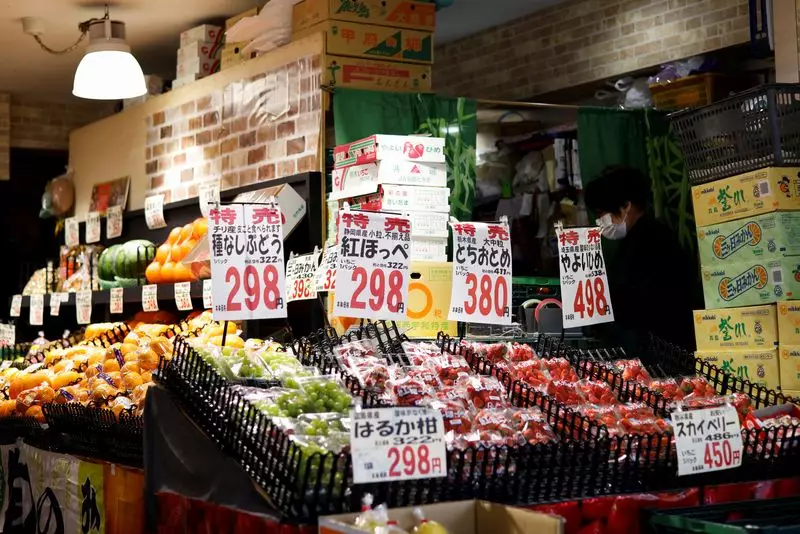In recent months, the economic landscape of Tokyo has shown signs of intensifying inflation, a trend that reflects broader global uncertainties and shifts in consumer behavior. As Japan grapples with rising living costs, a recent Reuters poll indicates that the core consumer price index (CPI) for January is expected to reveal a 2.5% year-on-year increase. This projection follows a 2.4% rise in December, underscoring a steady upward trend that merits a thorough analysis.
A critical development contributing to these inflationary pressures is the Bank of Japan’s recent decision to raise interest rates to their highest level in 17 years. This strategic move is not merely a reaction to current economic conditions but reflects the Bank’s confidence in an expected rise in wages, which they anticipate will stabilize inflation around the 2% target. Such decisions highlight the delicate balance between fostering economic growth and curbing inflation, a tightrope that central banks worldwide must navigate carefully.
Several factors have been identified as key drivers of the anticipated rise in Tokyo’s core CPI. High electricity and gas prices remain a significant concern, impacting household budgets and spending patterns. Additionally, there has been a notable increase in gasoline prices, which further compounds the inflationary environment. According to expert Takumi Tsunoda from the Shinkin Central Bank Research Institute, these rising energy costs are a primary influence on the overall inflation narrative in the region.
Apart from the CPI, a slew of other economic indicators are poised to be released, providing a more nuanced picture of Tokyo’s economy. The anticipated data on industrial output and retail sales for December also contributes to this narrative. Analysts predict a modest 0.3% rise in industrial output month-on-month, rebounding from a more significant 2.2% drop in November. This growth is expected to be fueled by robust demand in certain sectors, particularly in machinery manufacturing like semiconductors, which are crucial for modern economies.
Furthermore, retail sales are projected to increase by 3.2% year-on-year, bolstered by strong sales of seasonal products such as air conditioners, which are increasingly utilized for winter heating in urban settings. This consumer behavior adjustment illustrates how external factors, such as changing climate patterns, can influence economic activity.
Another vital aspect of the economic landscape is the stability seen in the labor market, with the unemployment rate remaining steady at 2.5% and the jobs-to-applicants ratio at 1.25. These figures reflect a consistent demand for labor, despite the inflationary environment, indicating that while prices may be rising, there remains underlying strength in employment opportunities.
As Tokyo continues to navigate the complexities of inflation and economic growth, the forthcoming data will be crucial in assessing the efficacy of the Bank of Japan’s policy measures. Consumers and policymakers alike will be watching closely, as the interplay between rising prices, wage growth, and employment opportunities will ultimately determine the economic trajectory of this vibrant metropolis. With careful analysis and responsive strategies, there remains hope for a balanced approach to managing inflation in the Japanese capital.

